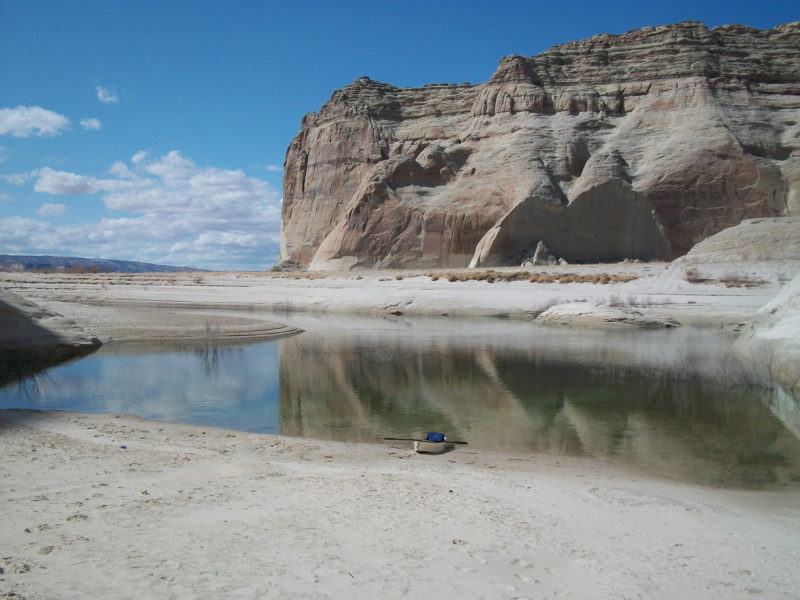 photographs by Tom Hepp
photographs by Tom HeppTom’s boats are small, but they carried him into grand landscapes, like the Glen Canyon cliffs surrounding Lake Powell.
Boats have always been a part of Tom Hepp’s life. He grew up on the banks of a river in Ohio, served in the Navy, and embarked upon a career as a merchant mariner. During his vacations he often traveled along the East Coast by car, visiting the port cities where he had worked. Being landbound didn’t sit well with him, and he longed to have a boat he could take with him.
Trailering a boat comes with its own set of limitations, and cartopping a boat on his van didn’t appeal to him either, but a nesting sectional boat could go in the van, stored safely until he found an opportunity to get afloat. He checked the Internet for nesting boats and didn’t find much, just a two-piece 8′ dinghy and a kayak.
To get the boat he wanted, he’d have to create it. Pirogues that he’d seen in WoodenBoat seemed like a good starting point. The simple design would be easy to adapt, quick to build, and lightweight.
While many pirogues are open boats, meant for the protected waters of Louisiana swamps, marshes, and bayous, Tom expected he’d have to contend with boat wakes if not wind-driven chop on the more open bodies of water he wanted to explore, so he drew up lines for a 9′6″ pirogue with airtight decked ends for flotation and a generous freeboard of 13″ and beam of 30″. The length of the center section of his three-part boat was determined by the distance from his lower back to his heels while he was seated. That turned out to be 51″. The bow and stern sections would have to fit in the center section.
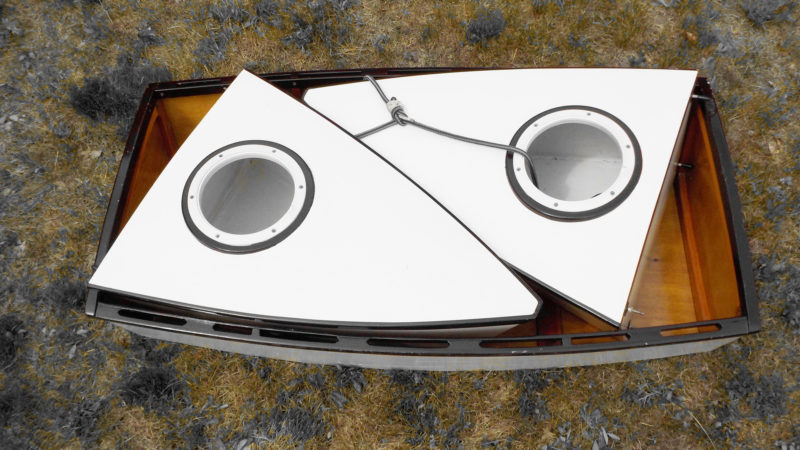
Both of the watertight ends had to fit in the open center section, limiting overall length to 9′ 6″.
He developed the shape using a half-hull model and then used scaled-up dimensions from it to build the bulkheads and frames. With those parts and the stems set up on a strongback, he faired the hull and planked it with plywood.
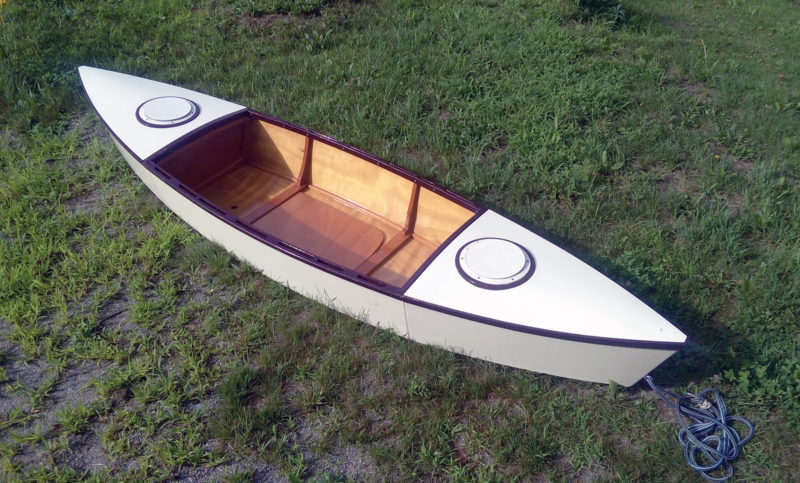
The first nesting boat was fashioned along the lines of a pirogue. The bow and stern sections were built with decks and watertight hatches to provide flotation in the event of a swamped cockpit.
He finished the boat in January 2010, a bad time for sea trials in the waters of Maine near his home in Appleton, so he packed the boat in his van and drove south to the Gulf of Mexico. The sea trials were successful, and Tom was ready to take the boat with him on his next vacation.
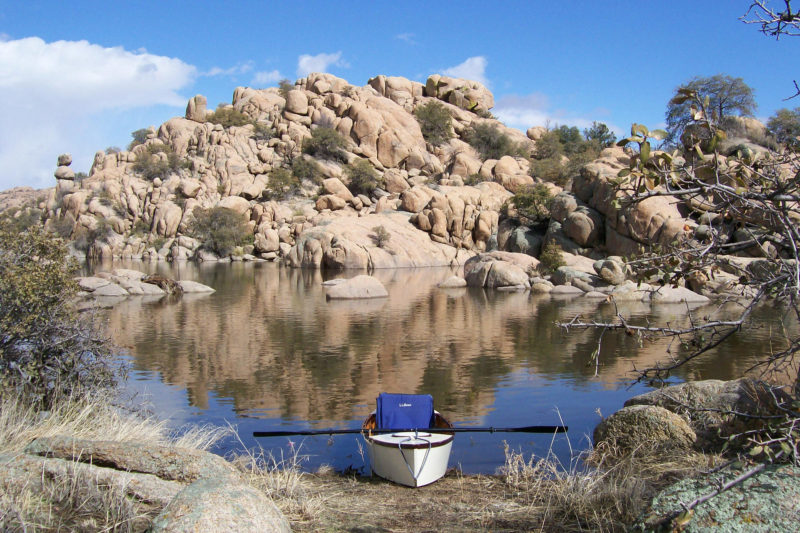
Tom took his first nesting boat to the Southwest and used it to explore the Granite Dells, which have been made boat-accessible by the reservoir waters of Arizona’s Watson Lake.
His first trip was to Arizona—Lake Watson and Lake Powell—and then to Texas and the Rio Grande. Travel in the years to come took the boat to the East Coast and back to the Southwest.
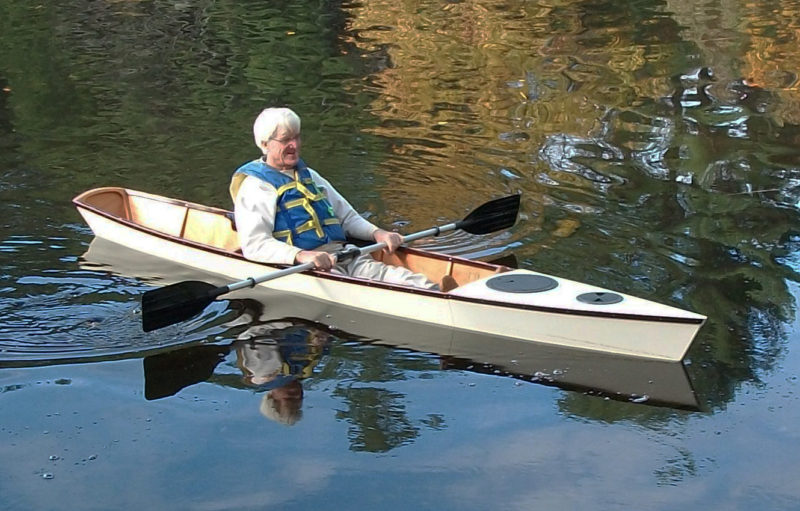
The first nesting boat provided a drier ride than expected, so this second boat had only one sealed compartment. The two open sections allowed a longer boat and the same compact nesting as the first.
That first nesting boat turned out to have more than enough freeboard for the waters Tom paddled, so he imagined building a pair of narrower nesting boats—one for a paddling companion—that would fit alongside each other in his van. He started with the same 51″ length for the center section, and opted for an open stern section.
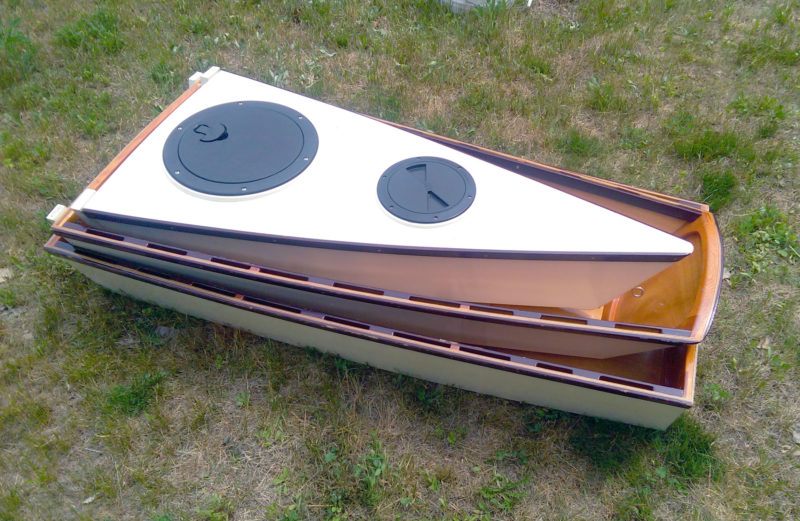
With open sections for the cockpit and stern, the nesting configuration allowed an overall assembled length of 12′.
Rather than have both ends nest in the middle, the bow section could fit in the stern and it would nest in the middle section. The new scheme allowed the boat to be 12′ long. With the greater length, Tom could reduce the beam from 30″ to 23″. He worked out the geometry on paper first, and then made a full-scale cardboard model. He built one boat to the design for sea trials. The boat performed well, so he built a second. Both fit behind the second row of seats in his van.
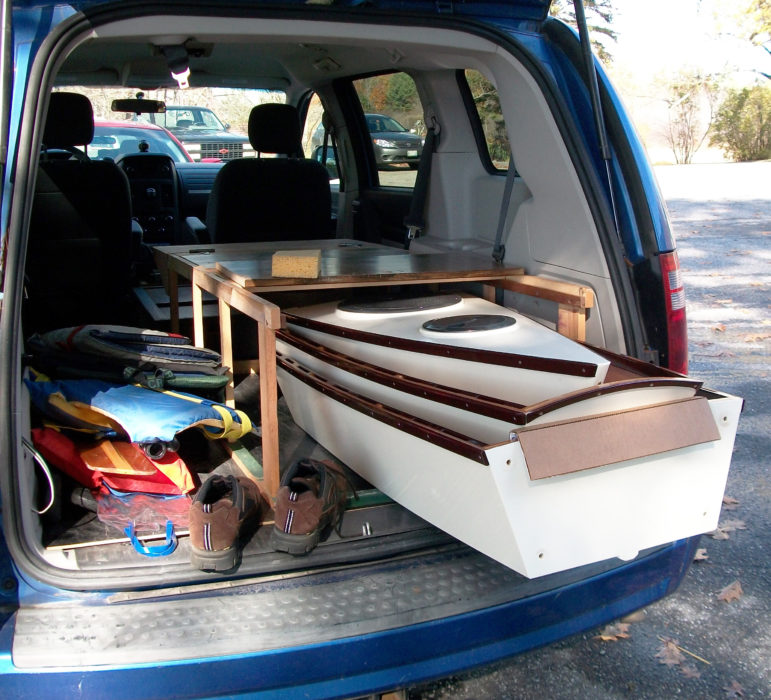
The first 12-footer fit in Tom’s van with plenty of room left for other gear. Tom would later build a second 12′ boat and find room for it in the van.
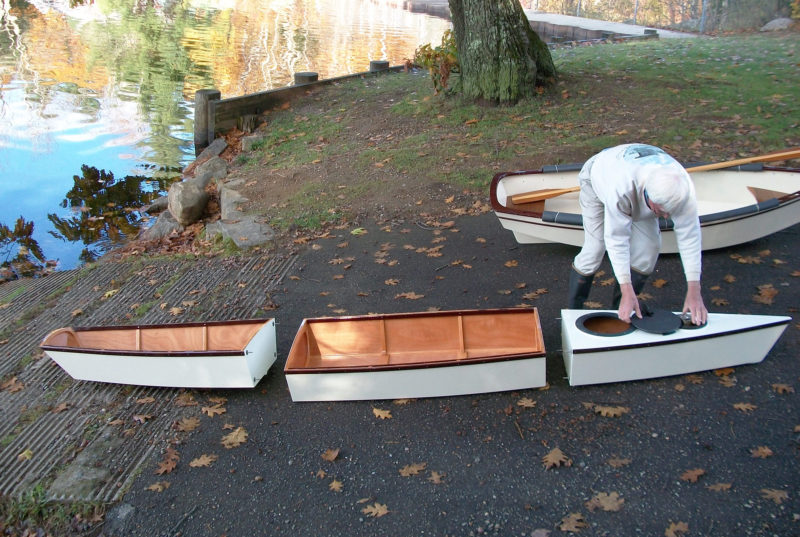 Vern Spenosa
Vern SpenosaAssembly at the water’s edge takes just a few minutes. After Tom tightens the eight wing nuts on the bolts in the bulkhead corners he’s ready to launch.
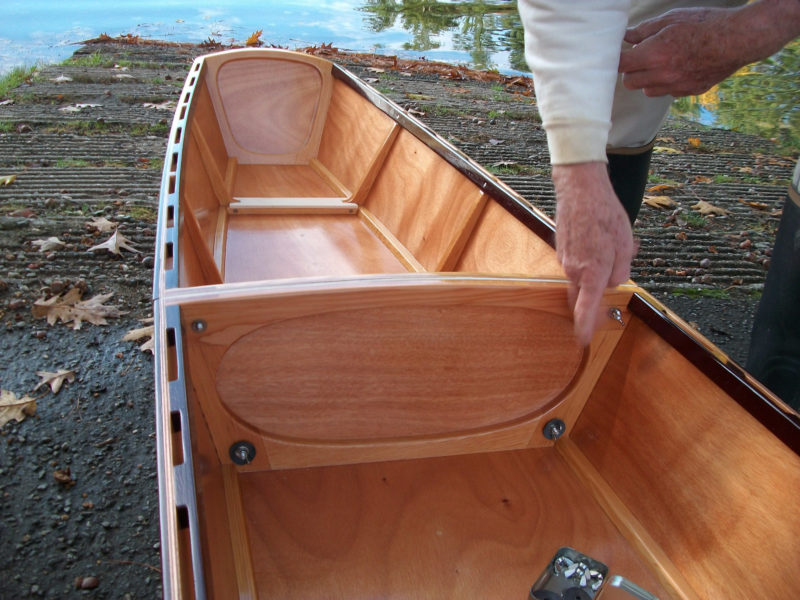
Bolts with wing nuts hold the sections together. Rubber washers make the fastenings watertight.
Since launching the 12-footer he has logged 860 miles in it, and has paddled in every state on the East Coast. The only change he would make to the design is an accommodation for a window in the center section for underwater viewing in the clear waters of Florida’s springs.![]()
Have you recently launched a boat? Please email us. We’d like to hear about it and share your story with other Small Boats Monthly readers.
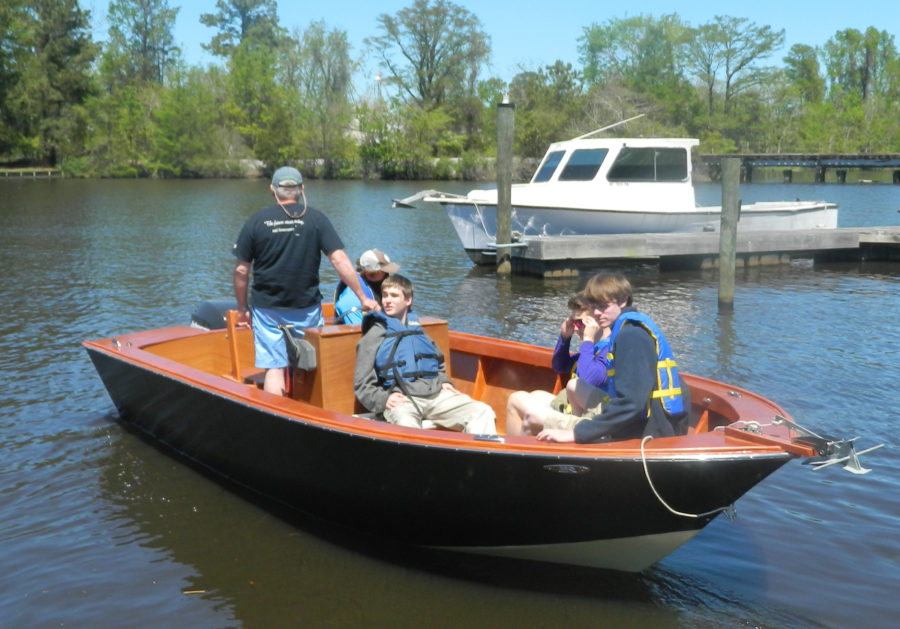


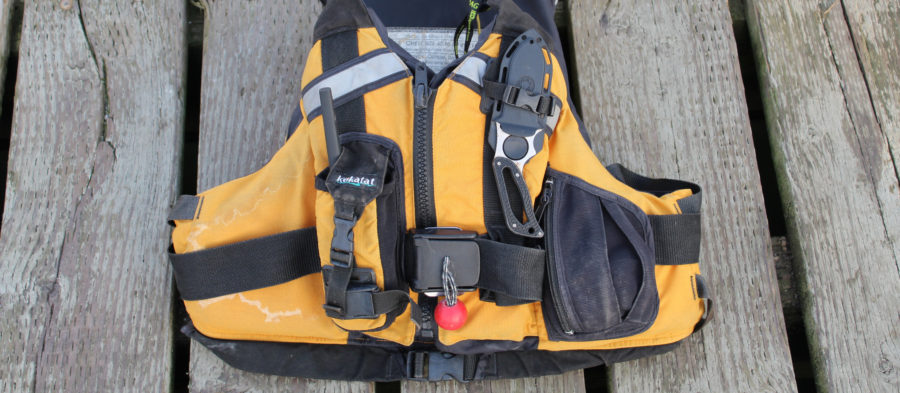


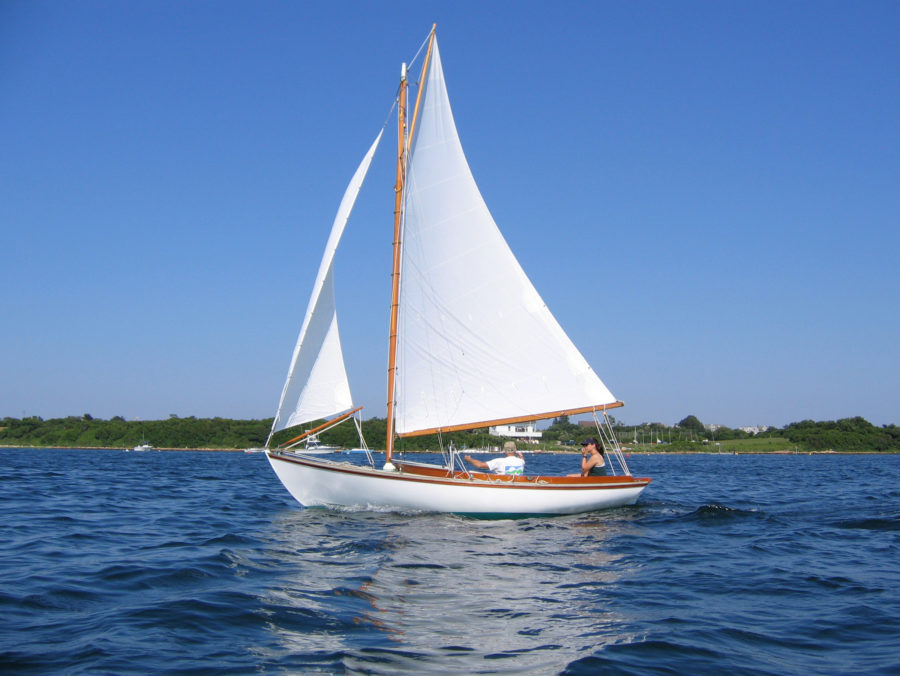



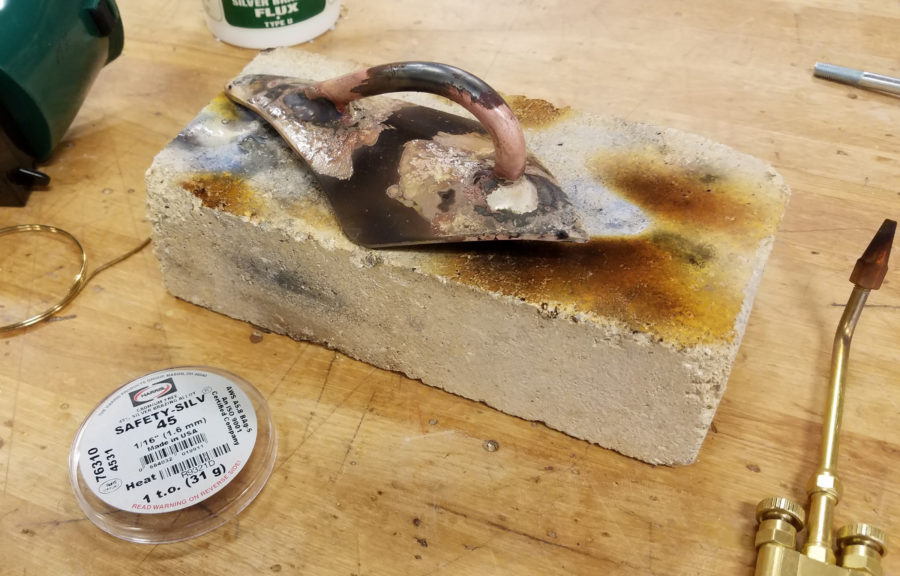
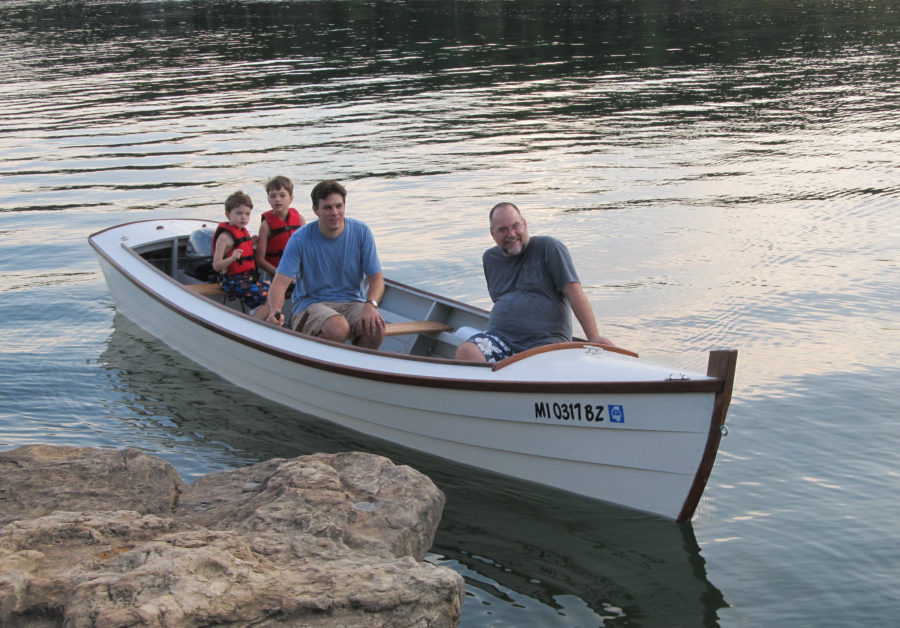
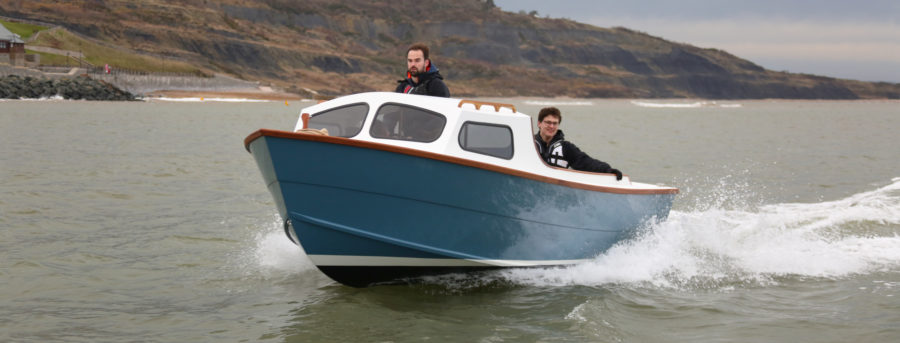
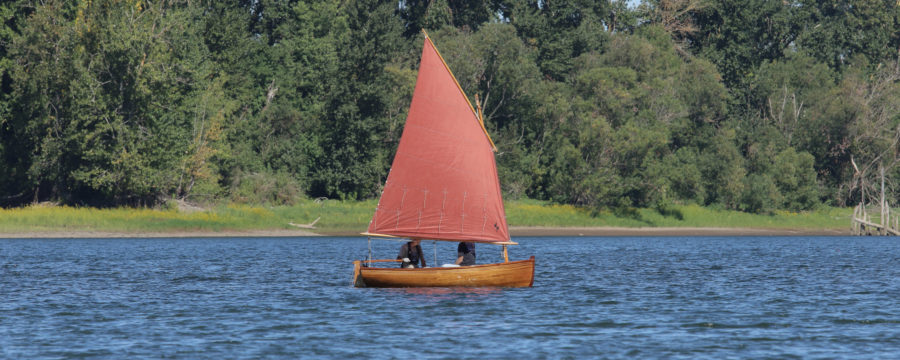
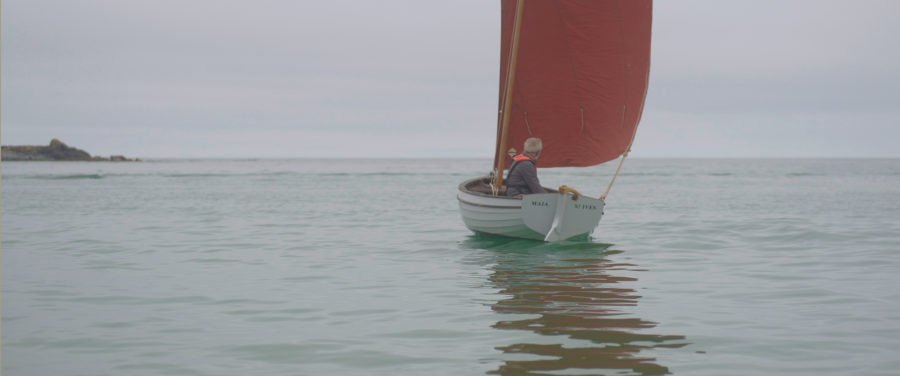
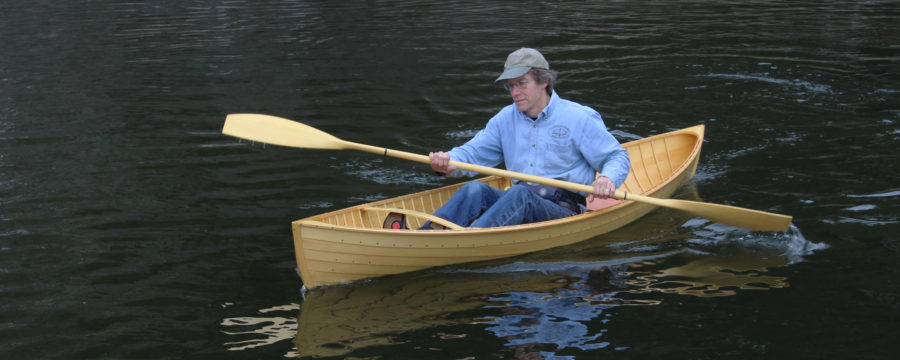
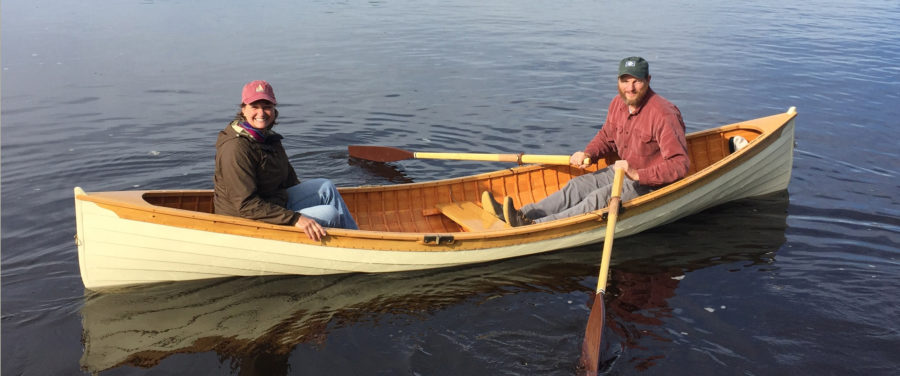
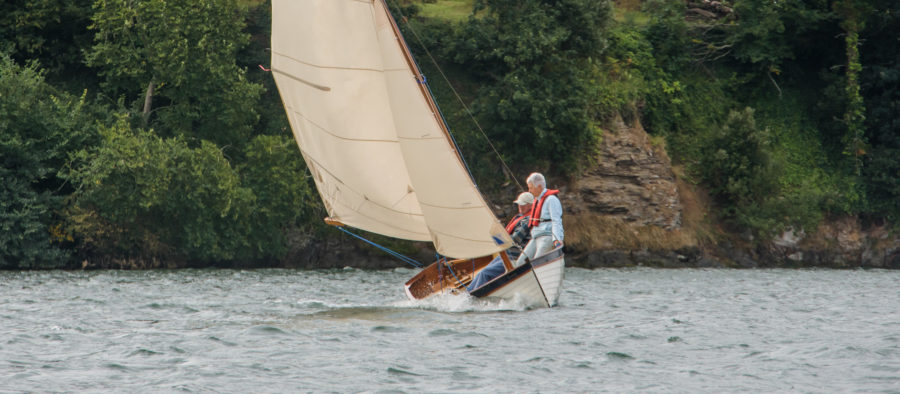


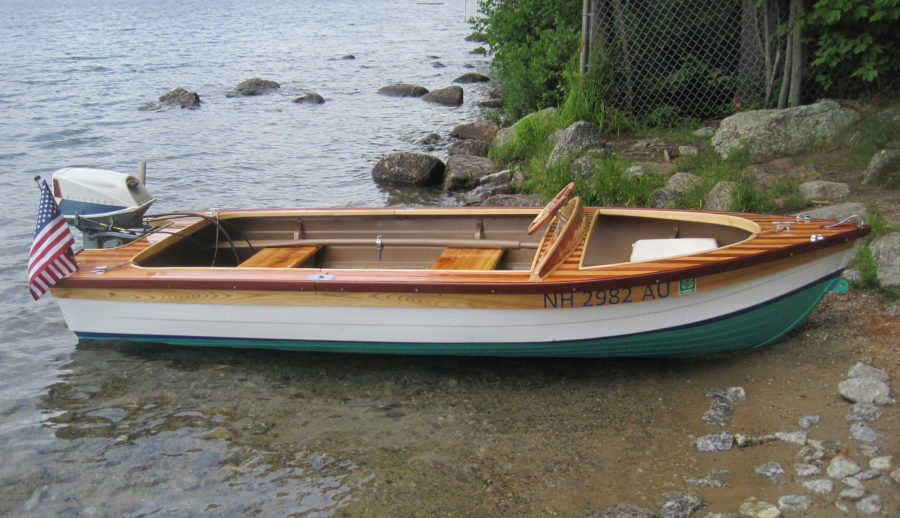
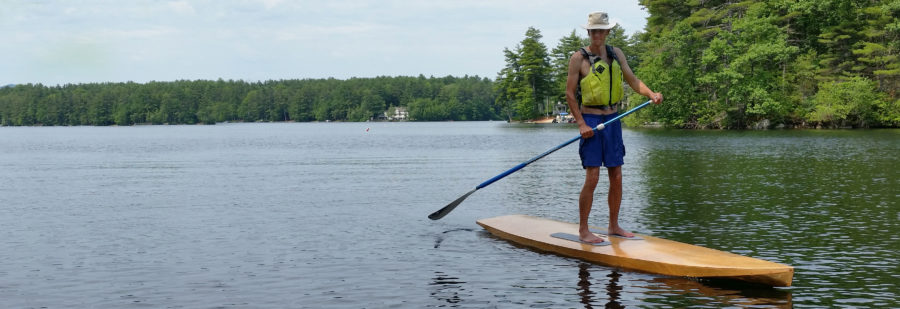
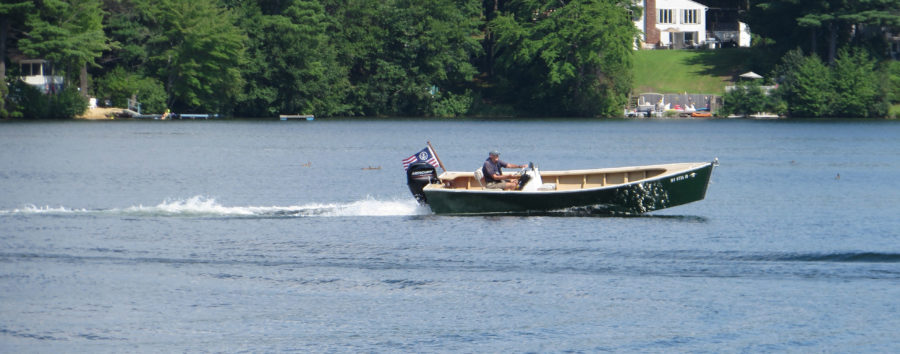
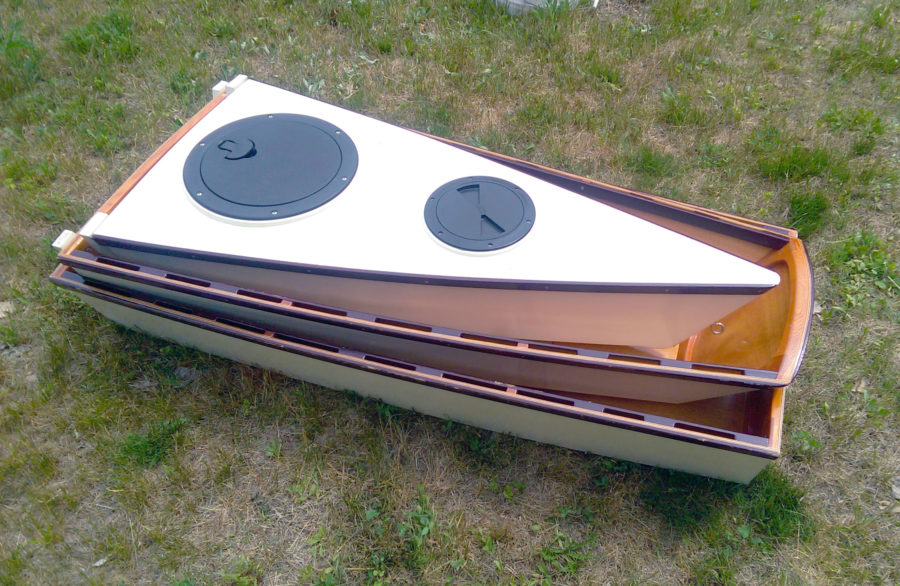

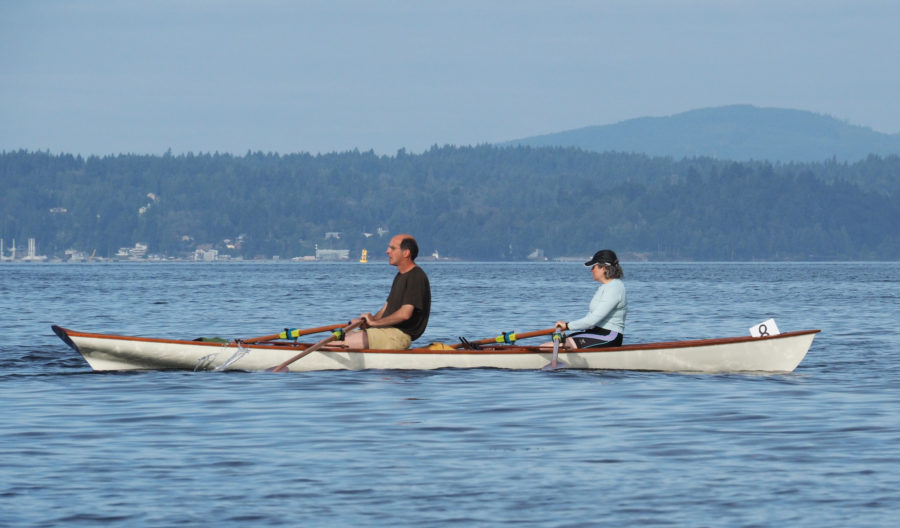

Nice work! I can envision this concept being useful as a dinghy on a cruiser that does not have a lot of deck space for a larger dinghy.
Great idea! Do the sections rattle much, or loosen up with use?
Happy paddling,
Charlie
Tom
I like the 3-part boat. Do you have any plans available to assist me in building one?
Thanks
Rand
Count me in. Great job on design and build of your three-part boat. Very neat and useful to a lot of people. I think of this not just for myself but as a youth build for raffle/fundraiser in our community.
Great idea
Tom, nice work. Two years ago I started a prototype and proof of concept for something similar (I never got the time to build the intended larger boat). I wanted an open interior, so I used foam rubber for gaskets, which I attached with glue. It does not leak!
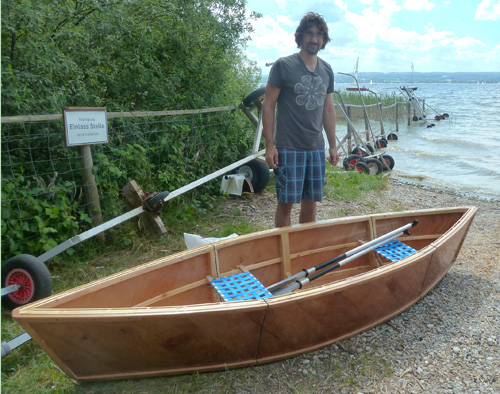
Florian, do you have a write up of your build somewhere?
Tom, I like the boat and want to build one. Do you have some plans to help me get started? Thanks, David
I would love some plans for Tom Hepp’s nesting pirogue (Sept. 2018).
Similar to some other comments, I’d like to build one. Are plans available?
Thanks. Wally in Canada.
Beautiful boat. I would love to have building information when it’s available.
INTERESTED IN PLANS?
Tom Hepp doesn’t have plans available but he is willing to provide photographs and drawings via email to interested readers later this year. Post a comment here and we’ll send the materials out when they’re available.
Chris Cunningham
Editor
I am very much interested in more detailed information of this versatile boat. Would really like to build one. Please send me photographs and drawings when they become available.
Tosiro Saruwatari
I am very much interested in more detailed information of this versatile boat. Would really like to build one. Please send me photographs and drawings when they become available.
Thank you!
Viktor Kovács from Hungary
I would be interested in the materials. Thank you.
I would like an email with the photos and notes. Thank you. And Tom…great build!!!
I would very much be interested in the plans. Thanks
Hello,
I would be very interested in any info on building this or something like it if available.
Mark
Beautiful boat. I would love to build something along these lines to carry on a cycle trailer. Please count me in for photos / drawings if they’re ever available.
Dear Editor,
I am very interested in detailed building process of Mr. Tom’s boat. I would like to build this boat. Could you please send me photographs and drawings materials to me when they become available.
Rathavuth Hong
Wow, super build. The rear section can be done even shorter!? The connection between the three parts are wood on wood without any sealant or gasket? Count me in for the details. Really anxious to see how it can be done.
Thanks ya’ll from Italy
I would love any info available, thank you!
Very excited about this boat! Please copy me on pics/plans, especially if there are measurements shown.
Thanks!
Could I get the build materials, please?
Much time has gone by, but like many others I am very interested in the boat and receiving the materials about it. Great work!
Many thanks!
=Ted Hall
Hi there Chris,
I am very interested indeed…
This looks like the perfect solution to the storage dilemma I have.
Cheers,
Raban
Great work, Tom. This looks like a fun project for next winter, I would like to see any photos and drawings that are available
Hi Tom, great article! I’d love to build one of these when you have instructions available. Would be a super addition to my “fleet”, saving me the need to cartop.
Awesome build! Would love some instructions to build one of my own!
I am a Scoutmaster and would like to build several of these with my Scouts. Plans, instructions, and photos would greatly be appreciated.
I too would love to undertake this. I have the corresponding van and the solution looks quite elegant. Please inform when ready. If you need photographs – I’m a professional photographer living west of Philly area.
Tom, you have managed to build something that appeals to many people and is likely to be used more than some larger boats because of its portability. I have an apprentice at work who is interested in building something like this so I too would be interested in any build information that you are intending to produce/share.
Thanks.
John
I would appreciate access to pics and drawings as well. Would like this to be a first in my up and coming boat building mania.
Thank you, Tom!
Luis
I’d like to get pics and whatever else is available to build one of these too.
Thank you very much, and kind regards,
Ruedi
Love this boat! Great idea! Please include me in email for notes and pictures!
Dave
Fantastic job. Please send me photos and plans when available.
Tom, congratulations for your beautiful designs. Once you have the drawings and photos, I would appreciate if you considered me to have a copy.
I like the design and finish. Congrats! My attempt has been during COVID lockdown in the UK. Mine has four sections and is 1100mm+ wide at the stern. Each section is watertight in its own right so that the joins form a seat and, like yours, there are 4 wing-nut bolts. I have used 6mm ply for the base and sides and 11mm ply for the connecting bulkhead ends. I have, to date, finished and tried the two rear sections (no leaks and rowed well) and am building the next one now. This is complicated by it having a daggerboard slit as I want to sail as well as row, so that may well leak as it’s removable and uses four bolts again. We shall see. The rear section is about 870mm long and each section tapers by about 50mm and is shorter by the same amount so that they fit inside each other. It’s quite heavy, so gets put on a small trestle and slid into the boot of my estate car. There are seats at the side and ends. The mast will be at the join of sections one and two and the dagger board near the next join. It’s going to be interesting building the bow section which will be covered at the top and may have a bowsprit in the end to accommodate a larger gib sail. Work in progress but hopefully tried soon after Easter 2021. Watch this space! Hope I live to tell the tale!
I used to have a Easy Rider 17′ kayak that had 3 sections. Being decked, there was no way to nest the sections inside each other. It was handy to load the boat up for a day trip without having to hoist it onto the car top. Assembling was reasonably quick. The bulkheads were very heavy to take the cantilever stresses such as you would encounter on a beach landing. The extra weight was not too onerous as you could handle each section one at a time. I toyed with the idea of cutting up my Pygmy Coho to sectionalize it, but on mature reflection came to my senses.
There have been several similar nesting boats over the years in magazines such as the old “How To Build 20 Boats.” Phil Bolger designed one where the sections were longitudinal rather than athwartship. The central section was open, and just wide enough to sit in, and also to nest the side “sponsons” within. It was a small boat (only 5’6″), intended as a tender for a larger vessel. The plan is in “Boats With an Open Mind,” and is called “Breakdown Punt.” I don’t think it would be too difficult to stretch it to a longer length.
Can’t tell if photos/drawings were ever sent, but I’m still interested in having, if they becme availible.
I’d love details for this boat if still available. The second, longer version 🙂
Are details and photos available still for the nesting boats, or plans? I would like to build these. Thank you.
They’re on their way via email.
—Ed.
Dear Christopher.
Coming to this a bit late. Could I also ask for details etc re Tom Heep boat. Greetings from Belfast, Northern Ireland. Martin
I would appreciate if you sent me a copy of your plans or drawings and any measurements that you might think appropriate, please.
I’ve emailed the files to you.
Ed.—
Hi Chris,
I would also love the plans, drawings or photos if you have them!
Thanks so much for such a helpful website and article!
I am interested in the photos and drawings as I would like to build two of them.
I would also enjoy building such a boat, as such the plans, drawings and/or photos would be much appreciated.
Thanks
Hi Chris,
Like so many others, I too would like a copy of whatever you have available on Tom’s excellent canoe. If there were any way to make a contribution to Tom or his favourite charity I’d be very happy to do so. Let me know.
If the files are still available I would love to build this boat.
Would love photos and details on how to build this! Fantastic design!
Wonderful idea. Would appreciate more info on Tom’s boat. Great to use with the grandchildren on the canals in Ireland.
Can you email the drawings / files for Tom’s boat?
Thanks
Would love to obtain details of Tom Hepps sectional boat if any are available.
Would love to obtain details of Tom Hepps sectional boat if any are available….Thank you
I would also like the plans, drawings, etc on the boat. I need a project like this, Thanks, appreciate it!
I would be very grateful to obtain details of Tom Hepps nesting boat if they are available.
Many thanks, in anicipation
This is small but elegant! I like the squared stern and the curves. Could I too get the details of Tom’s Take-apart (especially the Mk2). I might look at making a trailer with cradle to tow it behind my eBike
Very interested in the Tom Hepp’s 3 section, 1 sealed section nesting boat. I am not able to lift a normal full length boat but could manage 3 sections, 1 at a time. If details / photos / recommendations are available would appreciate any assistance you could provide.
Mike P
If the information is still available for this awesome little boat, I would love a copy. My youngest daughter is in her early twenties and wants a kayak to poke around in as part of her job. Problem is, she drives a Toyota Matrix. This would fit perfectly and make an excellent father-daughter project!